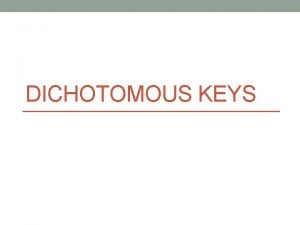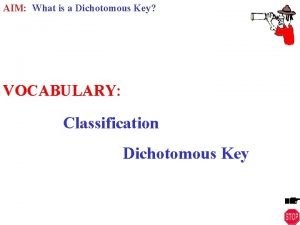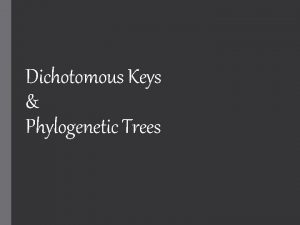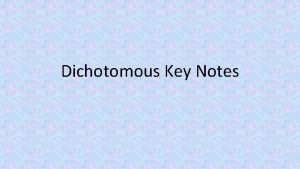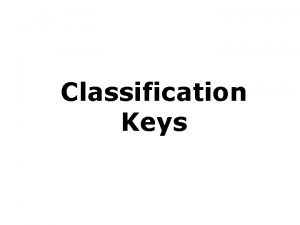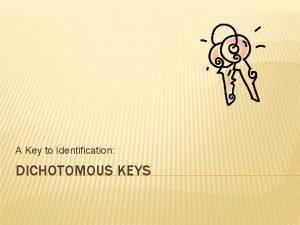Field Guides Dichotomous Keys Scientists use field guides






- Slides: 6

Field Guides & Dichotomous Keys Scientists use field guides or dichotomous keys to identify organisms.

Dichotomous Key: It is a tool used to identify organisms. For each trait, the key lists two contrasting options. By picking the option that match an organism’s feature, you can identify an organism. Eventually, you reach a choice that does not direct you to another set of choices. Instead, the key states the identity of the organism.

Using a Dichotomous Key:

Using a Dichotomous Key: An entomologist collected several insect specimens from a local meadow. She assigned each specimen a number, and recorded her observations in the dichotomous key shown below. What is the specimen number for the insect shown above? A. Number 145 B. Number 256 C. Number 232 D. Number 123

Using a Dichotomous Key: A student observed the following birds on a field trip. The student used a dichotomous key to classify each bird. What bird does Bird X represent? Bird W Bird X Bird Y Bird Z Dichotomous Key to Representative Birds 1. a. The beak is relatively long and slender. . . . . Certhidea b. The beak is relatively stout and heavy. . . . . go to 2 2. a. The bottom surface of the lower beak is flat and straight. . . Geospiza b. The bottom surface of the lower beak is curved. . . go to 3 3. a. The lower edge of the upper beak has a distinct bend. . Camarhynchus b. The lower edge of the upper beak is mostly flat. . . Platyspiza

Using a Dichotomous Key: A. B. C. D. 1. a. wings covered by an exoskeleton ………go to step 2 b. wings not covered by an exoskeleton ………. go to step 3 2. a. body has a round shape ………. Ladybug b. body has an elongated shape ………. Grasshopper 3. a. wings point out from the side of the body ………. Dragonfly b. wings point to the posterior of the body ………. Housefly

